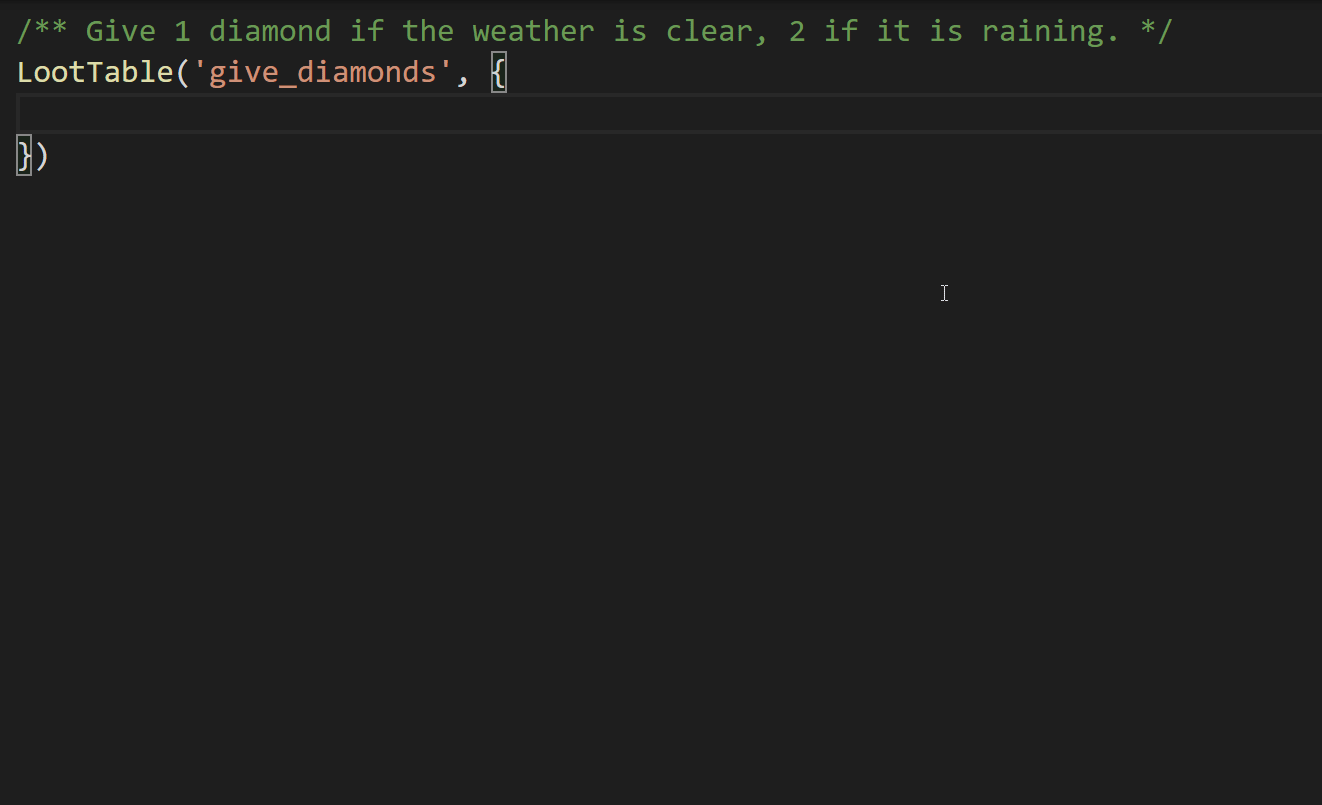Loot Tables
Introduction#
Sandstone features fully-typed loot tables. Like for all resources, you need to provide a name, which can include a namespace and folders. You then provide the definition of the loot table.
Syntax#
Minimal#
The minimal syntax for loot table is the following:
As you can see, you must provide a list of pool. A pool is defined by a list of entries and a number of rolls. For each entry, you must provide a type and. Once a type has been specified, the specific properties for this type will be available through autocompletion. The pool also has conditions and functions: read the built-in documentation or the Wikipedia article on Loot Tables for more information.
Example#

Additional properties#
All additional properties can be directly found via autocompletion (as shown above), or by looking at the Minecraft wiki article on Loot Tables.
Usage#
Sandstone Loot Tables have several methods mimicking the /loot command: